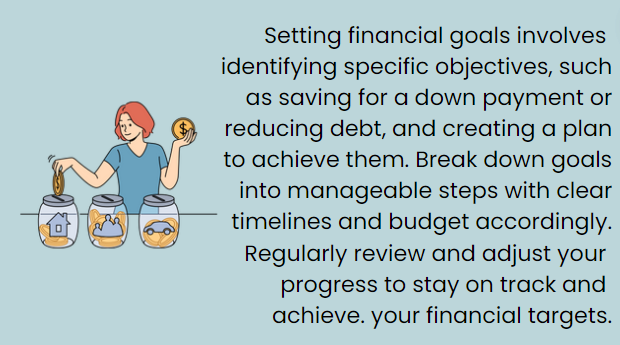In today’s fast-paced world, managing your finances effectively is crucial for achieving your financial goals and maintaining peace of mind. Creating a budget is the first step towards financial stability, but many people find the process daunting. This article will guide you through creating a simple, practical budget that works for your unique situation.
Why Budgeting Matters
Budgeting is essential for several reasons:
- Financial awareness
- Goal setting and achievement
- Debt reduction
- Savings accumulation
- Stress reduction
A well-planned budget helps you understand your spending habits, prioritize your expenses, and make informed financial decisions.
Step 1: Gather Your Financial Information
Before creating your budget, collect the following information:
- Monthly income (after taxes)
- Fixed expenses (rent, utilities, loan payments)
- Variable expenses (groceries, entertainment, transportation)
- Bank and credit card statements
Having this information at hand will make the budgeting process smoother and more accurate.
Step 2: Calculate Your Monthly Income
Start by determining your total monthly income. Include all sources of income, such as:
- Salary
- Freelance work
- Investment returns
- Rental income
| Income Source | Amount |
|---|---|
| Salary | $3,500 |
| Freelance | $500 |
| Investments | $200 |
| Total | $4,200 |
See also>> How to Talk So Others Will Listen: Tips for Better Conversations
Step 3: List Your Monthly Expenses
Categorize your expenses into fixed and variable costs. Fixed expenses remain relatively constant each month, while variable expenses fluctuate.
Fixed expenses:
- Rent/mortgage
- Utilities
- Insurance premiums
- Loan payments
Variable expenses:
- Groceries
- Dining out
- Entertainment
- Shopping
- Transportation
Step 4: Set Financial Goals
Identify short-term and long-term financial goals. These might include:
- Building an emergency fund
- Paying off credit card debt
- Saving for a down payment on a house
- Planning for retirement
Prioritize your goals and allocate funds accordingly in your budget.

Step 5: Choose a Budgeting Method
Select a budgeting method that suits your lifestyle and preferences. Here are three popular options:
- 50/30/20 Rule
- Zero-Based Budgeting
- Envelope System
Let’s explore the 50/30/20 Rule as an example:
| Category | Percentage | Amount |
|---|---|---|
| Needs | 50% | $2,100 |
| Wants | 30% | $1,260 |
| Savings | 20% | $840 |
This method allocates 50% of your income to needs, 30% to wants, and 20% to savings and debt repayment.
See also>> How to Choose the Right Outfit for Any Occasion
Step 6: Track Your Spending
Monitoring your expenses is crucial for sticking to your budget. Consider using:
- Budgeting apps (e.g., Mint, YNAB)
- Spreadsheets
- Pen and paper
Regularly review your spending to ensure you’re staying on track and make adjustments as needed.
Step 7: Review and Adjust Your Budget
Your budget should be flexible and adaptable. Review it monthly and make changes based on:
- Income fluctuations
- Unexpected expenses
- Changes in financial goals
- Lifestyle changes
Don’t be discouraged if you don’t stick to your budget perfectly at first. It takes time to develop good financial habits.
Step 8: Automate Your Finances
Simplify your budgeting process by automating bill payments and savings contributions. This helps ensure you’re meeting your financial obligations and working towards your goals consistently.
Step 9: Plan for Irregular Expenses
Don’t forget to account for irregular expenses, such as:
- Annual insurance premiums
- Holiday gifts
- Vehicle maintenance
- Home repairs
Set aside money each month for these expenses to avoid financial stress when they arise.

Step 10: Cut Unnecessary Expenses
Identify areas where you can reduce spending without significantly impacting your quality of life. Consider:
- Cancelling unused subscriptions
- Negotiating bills (e.g., phone, internet)
- Finding free or low-cost entertainment options
- Meal planning to reduce food waste
| Expense Category | Current | Reduced |
|---|---|---|
| Subscriptions | $50 | $30 |
| Dining Out | $200 | $150 |
| Entertainment | $100 | $75 |
See also>> How to Make Time for Hobbies in a Hectic Schedule
FAQs
Q: How often should I review my budget?
A: Review your budget monthly to track progress and make necessary adjustments.
Q: What if I have irregular income?
A: Base your budget on your average monthly income and save extra during high-earning months.
Q: Should I use cash or credit cards for budgeting?
A: Choose the method that helps you control spending best. Some prefer cash for its tangible nature, while others like credit cards for tracking purposes.
Q: How much should I save each month?
A: Aim to save at least 20% of your income, but adjust based on your financial goals and circumstances.
Q: What if I can’t stick to my budget?
A: Don’t give up! Analyze why you’re struggling and make realistic adjustments. Remember, budgeting is a skill that improves with practice.
Conclusion
Creating a simple budget that works for you is a powerful tool for achieving financial stability and reaching your goals. By following these steps and consistently reviewing and adjusting your budget, you’ll gain control over your finances and build a secure financial future. Remember, the key to successful budgeting is finding a system that fits your lifestyle and sticking with it.
